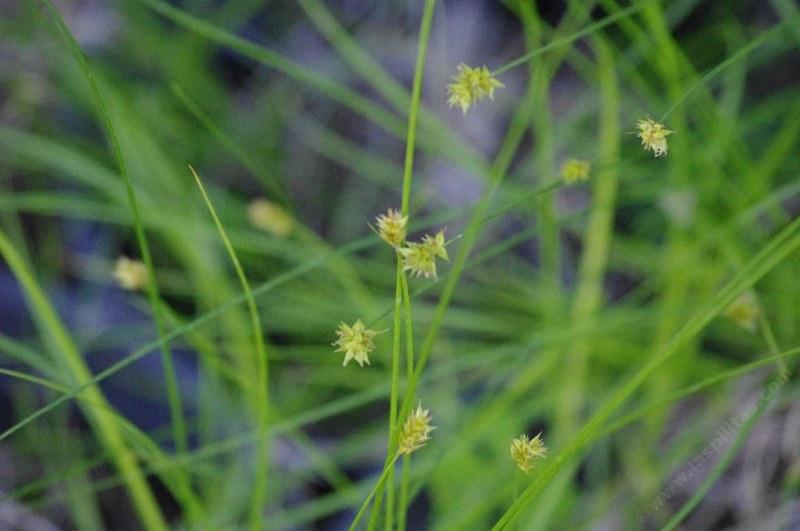Carex pansa
Dune Sedge.
Sanddune Sedge, Carex pansa is a very small creeping dune plant,
with leaves making little tufts where it is happy. The happier the plant,
the bigger the lawn. Needs near beach sand. The only time I've ever
seen it look good in the wild was in an inner dune low spot that was
moist and protected, then Dune Sedge almost made a lumpy lawn. Dune
sedge cannot compete with alien grasses such as Veldt Grass (Ehrharta calycina) or Bromus species. It sometimes gets called out for restoration; in that situation it should
be either grown from propagules from the site, or divided on site. In
yards it will only do best in beach sand, moist, protected, flagstone/paver
crack type situations.
Someone has been spending time talking this one up.
Here's a typical email or conversation. We want a lawn for about 5000 sq. feet of our backyard. However, we don't want to water or mow much (with the emphasis on water). We live in Los Osos where our soil is relatively fine-grained, dirty sand. We have two kids ages 7 and 4 who want to play sports (soccer, wiffle ball, etc.) in the backyard. Carex pansa looks like it might do the trick but we have a few questions: 1). Will it take traffic? No. 2). Would it be a good idea to add something like composted steer manure to the soil? No. 3). Can a gallon be split to create plugs? Yes, but we only have a few. 4). Will we really be using less water than something like a dwarf tall fescue or other slow-growing, drought resistant grass mix that could be grown from seed? (In the driest months, in areas that we don't water, the sand is moist 6-10 inches down and deeper.)
Carex pansa is native there, forming little clumps separated by feet of open sand, kinda like a dog with mange. Will not work as lawn. None of the natives will that we've seen, except maybe Danthonia, but it needs more water than some of the turf lawn grasses. If you wish to try to make a lawn with Dune Sedge, make the lawn as small as you can to make the kids happy, put in 'trails,' native groundcovers and shrubs. Wildlife, kids and you will be happy.
Someone has been spending time talking this one up.
Here's a typical email or conversation. We want a lawn for about 5000 sq. feet of our backyard. However, we don't want to water or mow much (with the emphasis on water). We live in Los Osos where our soil is relatively fine-grained, dirty sand. We have two kids ages 7 and 4 who want to play sports (soccer, wiffle ball, etc.) in the backyard. Carex pansa looks like it might do the trick but we have a few questions: 1). Will it take traffic? No. 2). Would it be a good idea to add something like composted steer manure to the soil? No. 3). Can a gallon be split to create plugs? Yes, but we only have a few. 4). Will we really be using less water than something like a dwarf tall fescue or other slow-growing, drought resistant grass mix that could be grown from seed? (In the driest months, in areas that we don't water, the sand is moist 6-10 inches down and deeper.)
Carex pansa is native there, forming little clumps separated by feet of open sand, kinda like a dog with mange. Will not work as lawn. None of the natives will that we've seen, except maybe Danthonia, but it needs more water than some of the turf lawn grasses. If you wish to try to make a lawn with Dune Sedge, make the lawn as small as you can to make the kids happy, put in 'trails,' native groundcovers and shrubs. Wildlife, kids and you will be happy.
Carex pansa tolerates sand and seasonal flooding.
Foliage of Carex pansa has color silver and is stressdeciduous.
Flower of Carex pansa has color na.
Communities for Carex pansa:Coastal Sage Scrub and Coastal Strand.
| ph: | 4.50 to 7.50 |
|---|---|
| usda: | 8 to 10 |
| height[m]: | 0.00 to 0.10 |
| width[m]: | 0.10 to 1.00 |
| rainfall[cm]: | 50.00 to 120.00 |




